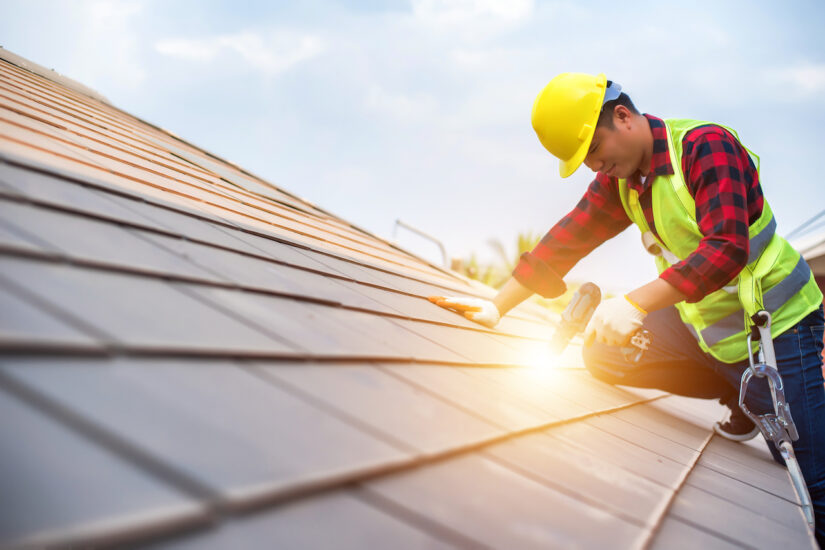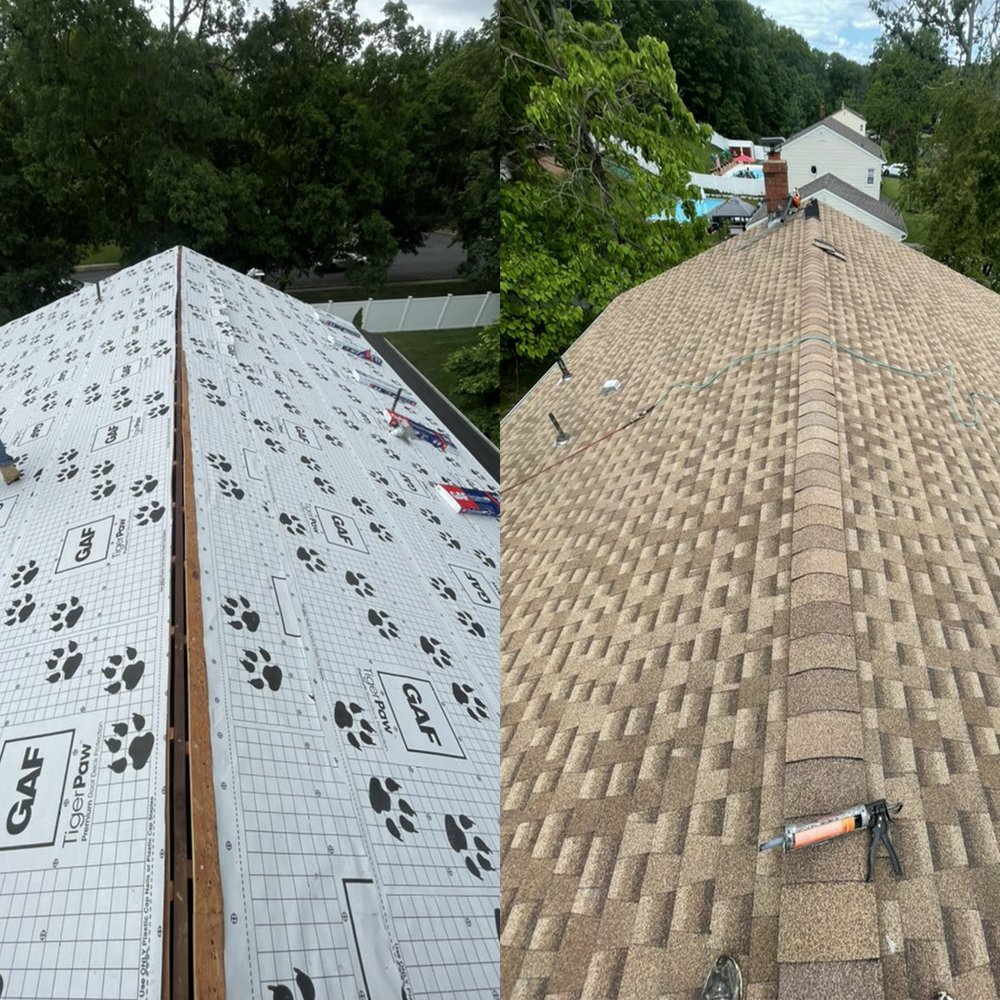Roofing Companies Oahu: Trusted Professionals for Your Roofing Needs
Roofing Companies Oahu: Trusted Professionals for Your Roofing Needs
Blog Article
Understanding the Various Kinds Of Roof Coverings: A Comprehensive Guide for Homeowners
With a range of alternatives-- ranging from the typical gable to the contemporary flat-- each kind presents unique advantages and challenges that ought to straighten with the property owner's particular needs and environmental factors to consider. As we explore the intricacies of various roof covering types, it ends up being evident that one size does not fit all; the best option may surprise you.
Gable Roofings
Saddleback roofs, defined by their triangular form, are among the most prominent roof designs due to their simplicity and efficiency in losing water and snow. This design features two sloping sides that satisfy at a ridge, enabling reliable drain and lessening the threat of water build-up. The steep pitch generally connected with gable roofings boosts their capacity to deal with hefty rainfall, making them ideal for numerous environments.
In addition to their practical benefits, saddleback roofs provide visual flexibility. They can be adjusted to various building styles, from traditional to contemporary homes. The style can likewise fit extra functions such as dormer home windows, which improve natural light and ventilation in the attic room room.
Additionally, saddleback roofs offer ample area for insulation, adding to energy efficiency. Homeowners can select from a variety of roofing products, including asphalt roof shingles, metal, and floor tiles, even more enhancing customization alternatives.
In spite of their advantages, gable roofing systems may require added assistance in locations prone to high winds or hefty snowfall. Generally, the gable roofing remains a preferred option due to its mix of functionality, longevity, and aesthetic appeal.
Flat Roofs
Level roofing systems are frequently identified for their minimal style and sensible applications, especially in commercial and business setups (oahu roofing). These roofs include a straight or nearly horizontal surface area, which permits easy building and construction and flexible room usage. While they might do not have the aesthetic allure of angled roofs, level roof coverings use various advantages, specifically in metropolitan settings where making the most of space is vital
Among the primary advantages of level roofings is their ease of access. Homeowners can utilize the roofing space for different objectives, such as roof yards, terraces, or solar panel installations. Furthermore, level roofing systems are normally more cost-efficient to set up and keep compared to their sloped equivalents, as they require less materials and labor.
Nevertheless, flat roof coverings do existing certain challenges. Proper drainage is vital to protect against water merging, which can bring about leaks and architectural damage. For this reason, selecting top notch waterproofing materials and routine evaluations are crucial for making sure long life. Typical products utilized for flat roofing systems consist of built-up roof covering (BUR), customized asphalt, and single-ply membranes, each offering distinctive advantages. On the whole, flat roofing systems work as a functional and versatile option for many property owners and businesses alike.
Hip Roof Coverings
Hip roofing systems are identified by their sloped sides that assemble at the top, forming a ridge. This layout stands out from gable roofing systems, as all 4 sides of a hip roofing system incline downwards toward the walls, providing a much more stable structure. The angle of the inclines can vary, enabling versatility in building visual appeals and capability.
Among the main benefits of hip roofs is their capability to withstand heavy winds and negative climate conditions. The sloped surfaces enable much better water drain, lowering the danger of leaks and water damages. In addition, hip roofs provide raised attic room space, which can be used for storage space and even exchanged comfortable locations.
Nevertheless, building a hip roof covering Get More Info can be a lot more costly and intricate than less complex roof covering kinds, such as gable roofs. The added product and labor entailed in producing the inclines and guaranteeing appropriate structural honesty can lead to greater costs. Regardless of these downsides, several house owners favor hip roofing systems for their durability, visual appeal, and potential for power effectiveness.
Mansard Roofing Systems
Mansard roofing systems, frequently recognized by their special four-sided layout, feature 2 slopes on each side, with the reduced slope being steeper than the top. This architectural style, originating from France in the 17th century, is not just visually enticing however functional, as it makes the most of the usable area in the upper floorings of a structure. The steep reduced slope permits more clearance, making it an excellent selection for attics or loft spaces, which can be converted into living rooms.
Mansard roofings are characterized by their convenience, fitting different architectural styles, from standard to modern. They can be built with various materials, consisting of asphalt shingles, slate, or steel, providing homeowners with a variety of alternatives to suit their budget plans Resources and preferences. Furthermore, the layout permits the assimilation of dormer windows, boosting natural light and air flow in the top levels.
Nevertheless, it is important to take into consideration the prospective downsides. Mansard roofing systems might require more upkeep as a result of the intricacy of their design, and their steep inclines can be challenging for snow and rainfall runoff. In general, mansard roof coverings integrate sophistication with usefulness, making them a prominent option amongst property owners looking for distinctive building attributes.
Lost Roofing Systems
As house owners significantly look for simpleness and capability in their architectural layouts, lost roof coverings useful source have actually arised as a preferred selection. Characterized by a solitary sloping aircraft, a shed roofing presents a minimalist visual that enhances numerous home styles, from contemporary to rustic.
One of the main advantages of a shed roof is its straightforward construction, which usually converts to lower labor and material prices. This style permits effective water drain, reducing the danger of leaks and water damage. Furthermore, the upright incline gives sufficient room for skylights, improving all-natural light within the interior.
Dropped roofings also use versatility in terms of use. They can be properly integrated into additions, garages, or outdoor structures like sheds and structures. Additionally, this roof covering style can accommodate numerous roofing materials, including metal, asphalt roof shingles, or also green roofings, straightening with environmentally friendly efforts.
However, it is necessary to think about local climate conditions, as hefty snow tons might require changes to the roof covering's angle or framework. Overall, lost roofings offer a sensible and cosmetically pleasing alternative for homeowners aiming to make the most of functionality without jeopardizing design.
Verdict


Gable roof coverings, identified by their triangular form, are among the most prominent roof covering designs due to their simplicity and efficiency in dropping water and snow. oahu roofing. The steep pitch commonly linked with gable roof coverings boosts their capacity to take care of heavy rainfall, making them ideal for different environments
While they may do not have the visual allure of pitched roofing systems, level roof coverings provide countless benefits, specifically in metropolitan atmospheres where taking full advantage of space is essential.

Report this page